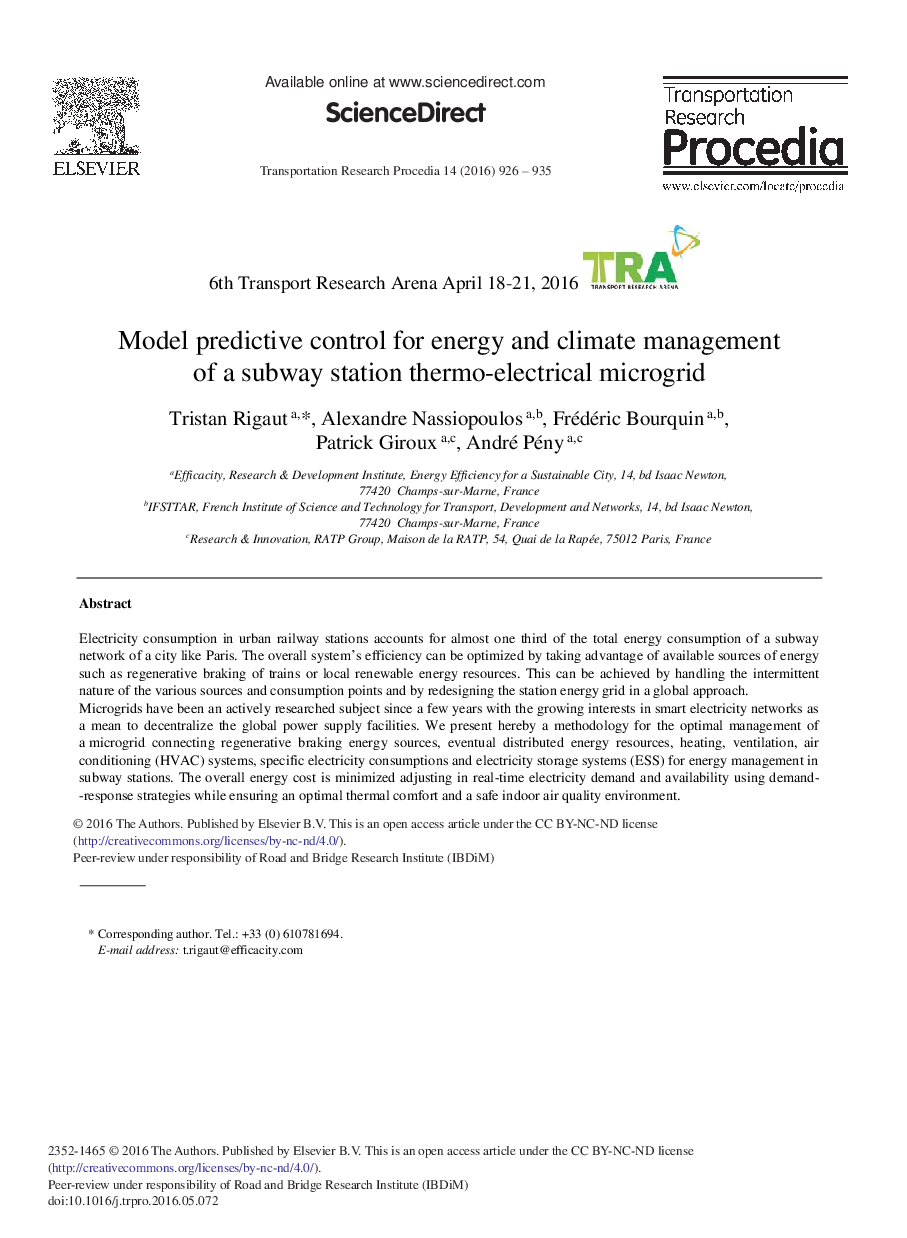| Article ID | Journal | Published Year | Pages | File Type |
|---|---|---|---|---|
| 1106282 | Transportation Research Procedia | 2016 | 10 Pages |
Electricity consumption in urban railway stations accounts for almost one third of the total energy consumption of a subway network of a city like Paris. The overall systemʼs efficiency can be optimized by taking advantage of available sources of energy such as regenerative braking of trains or local renewable energy resources. This can be achieved by handling the intermittent nature of the various sources and consumption points and by redesigning the station energy grid in a global approach.Microgrids have been an actively researched subject since a few years with the growing interests in smart electricity networks as a mean to decentralize the global power supply facilities. We present hereby a methodology for the optimal management of a microgrid connecting regenerative braking energy sources, eventual distributed energy resources, heating, ventilation, air conditioning (HVAC) systems, specific electricity consumptions and electricity storage systems (ESS) for energy management in subway stations. The overall energy cost is minimized adjusting in real-time electricity demand and availability using demand-response strategies while ensuring an optimal thermal comfort and a safe indoor air quality environment.
